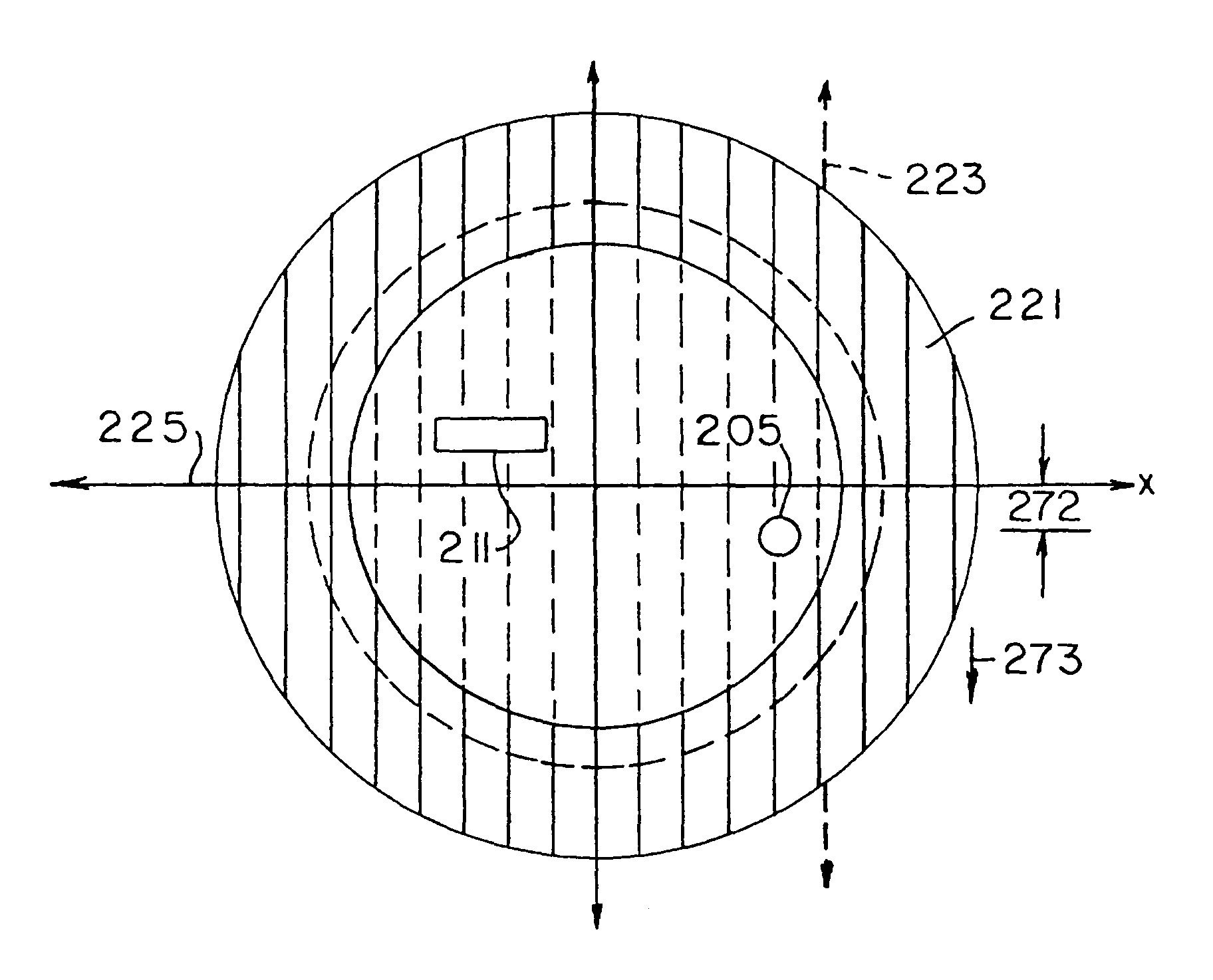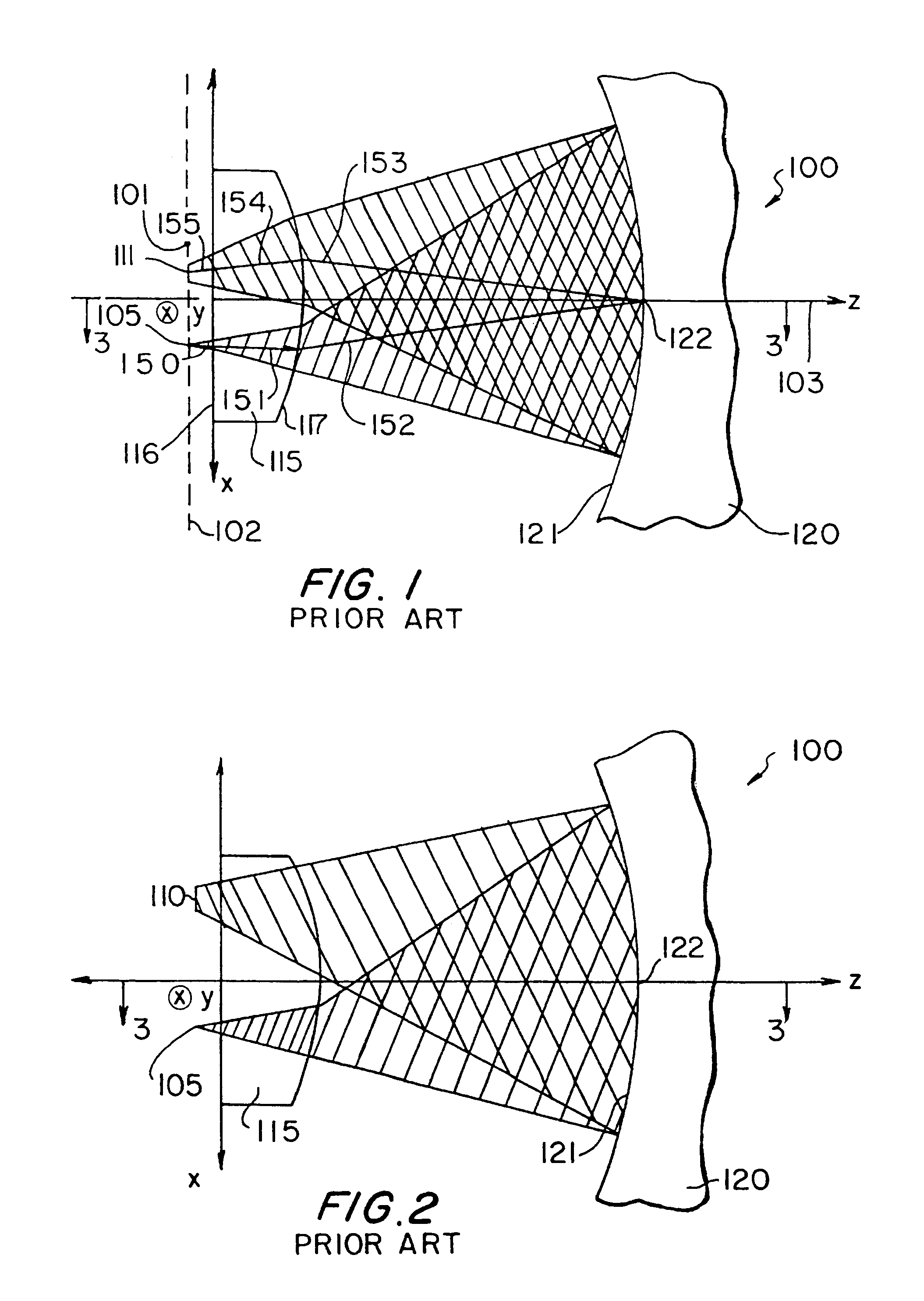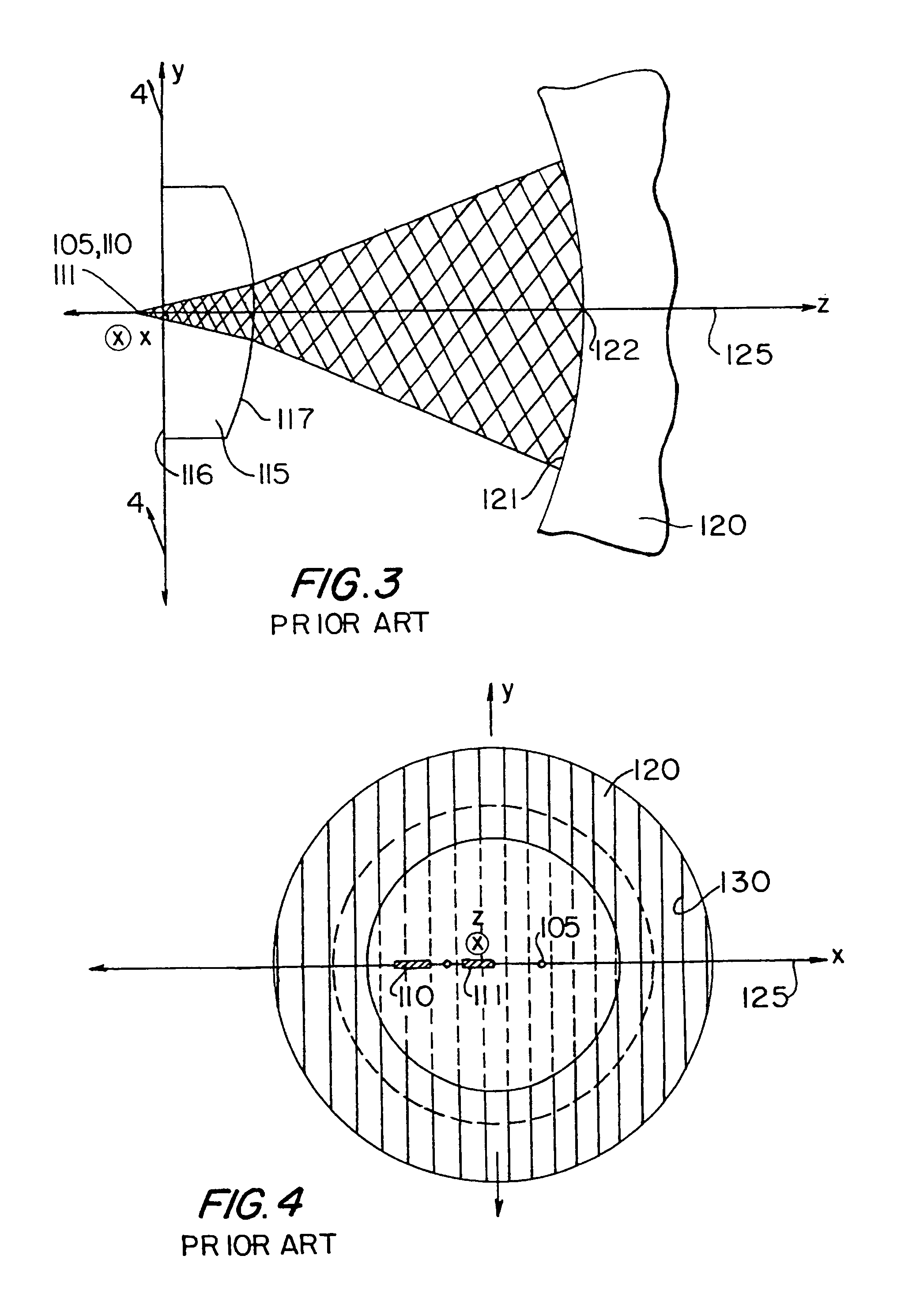Modified concentric spectrograph
a spectrograph and concentric technology, applied in the field of diffraction-grating spectrographs, can solve the problems of inability to measure the intensity of the desired spectrum independently from the undesired spectrum, the sharp image of the concentrated spectrograph, and the difficulty of preventing the contamination of stray light by the concentric spectrograph
- Summary
- Abstract
- Description
- Claims
- Application Information
AI Technical Summary
Benefits of technology
Problems solved by technology
Method used
Image
Examples
Embodiment Construction
[0034]According to the present invention, a method and apparatus for diffracting polychromatic light using a modified concentric spectrograph are provided. By means of this invention, polychromatic light is diffracted and imaged at an exit port with high resolution and increased stray light rejection.
[0035]Conventional concentric spectrographs include an entrance port, an exit port, a hemispherical lens, and a concave diffraction grating, which has a meridian plane. In operation, a beam of light enters the spectrograph through the entrance port and propagates substantially in and along the meridian plane until the diffracted light exits the spectrograph at the exit port. Therefore, the entrance and exit ports are positioned substantially in the meridian plane.
[0036]This arrangement, however, has the important disadvantage of contaminating the desired spectrum at the exit port with stray light due to internal reflections of other spectra. For example, conventional concentric spectrog...
PUM
 Login to View More
Login to View More Abstract
Description
Claims
Application Information
 Login to View More
Login to View More - R&D
- Intellectual Property
- Life Sciences
- Materials
- Tech Scout
- Unparalleled Data Quality
- Higher Quality Content
- 60% Fewer Hallucinations
Browse by: Latest US Patents, China's latest patents, Technical Efficacy Thesaurus, Application Domain, Technology Topic, Popular Technical Reports.
© 2025 PatSnap. All rights reserved.Legal|Privacy policy|Modern Slavery Act Transparency Statement|Sitemap|About US| Contact US: help@patsnap.com



